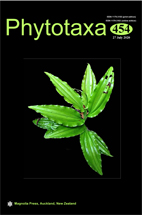Abstract
Crepidium amplectens and Crepidium lowii are reported as two newly recorded Crepidium species belong to sect. Commelinodes from Peninsular Malaysia. The taxonomic affinity is discussed and validated involving another two of their complexes, Crepidium micranthum and Crepidium rheedei subsp. rheedei, to which they share some similar characteristics of the leaves and flowers. The comparative study was conducted based on a comprehensive description and clear photographic evidence of the macro-morphology and surface micro-morphology of the labellar and gymnostemium parts. This paper emphasizes the usefulness of diversity and distribution of ultrastructures and epicuticular sculpturing of the reproductive parts in delimiting the confusable and sympatric Crepidium species, and a brief note on the nectar or reward secretion in the genus with inference on the ecological adaptation and pollination strategies. Macro-morphologically, C. amplectens differs from C. lowii in having the leaves smaller, greenish and widely ovate. Individually, both species can be differentiated from C. micranthum based on the smaller flower and shorter labellum auricles, and inconspicuous gymnostemium stelidia. Micro-morphologically, C. amplectens is also distinguishable from C. lowii by having different diversity and distribution of the epicuticular ornamentation and papillae on the labellum and gymnostemium. Also, amongst the four studied species, only C. lowii has nectarostomata, occurring on the fovea or nectary.

